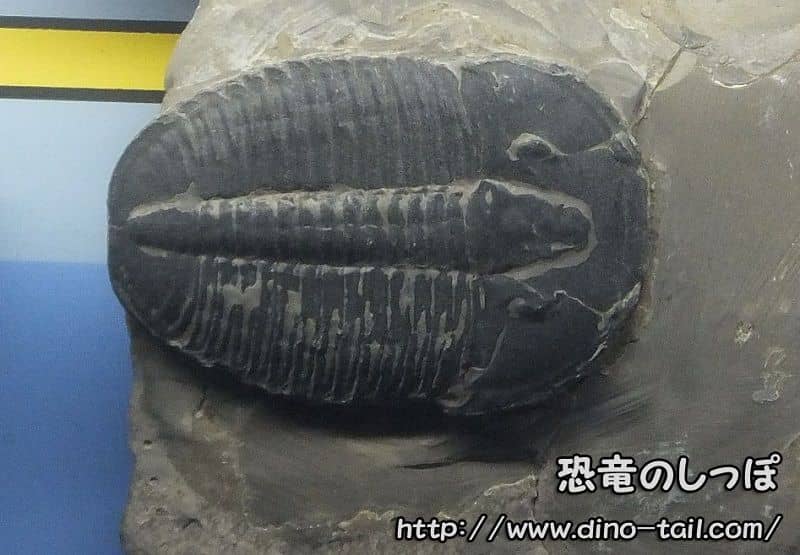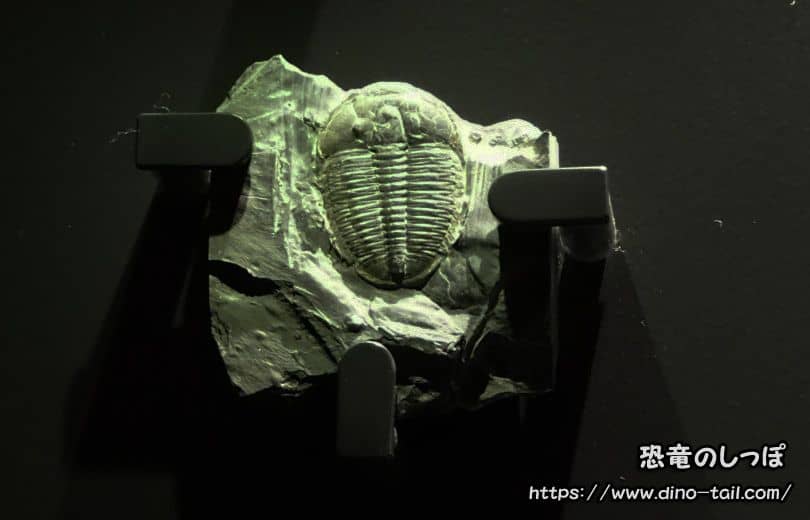About Elrathia
| Scientific Name (Genus) | Elrathia |
| Meaning of Name |
Named after Elrath (a place name)
*Derived from the place name Elrath in Utah |
| Classification | Trilobita, Redlichiida, Ptychopariina, Alokistocaridae |
| Period | Cambrian |
| Sub-classification / Species Name |
Elrathia kingii
Elrathia marjumi Elrathia antiquata Elrathia permulta, etc. |
| Year of Paper Publication | 1924 |
Features
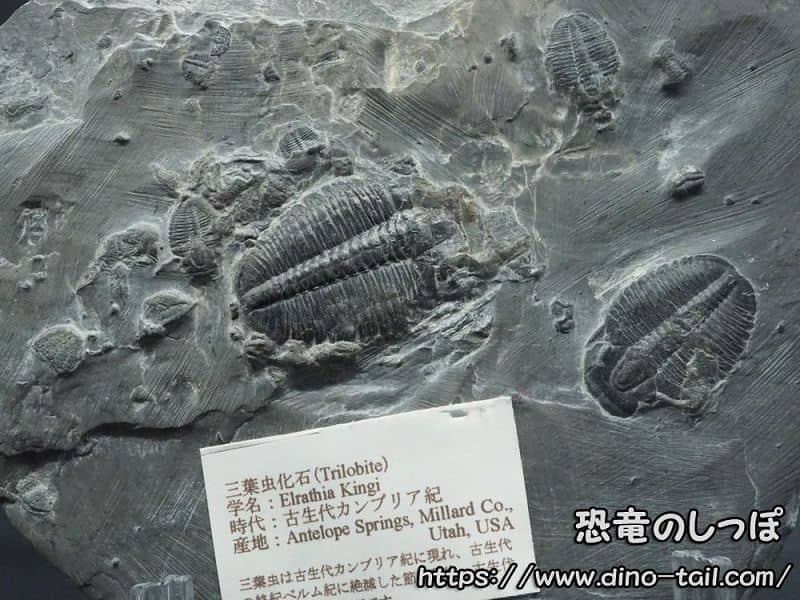
My Collection
Elrathia may be the most familiar genus of trilobite.
Small Elrathia kingii are found in huge numbers (hundreds of thousands) in the Cambrian strata of Utah, USA, so they can be purchased cheaply at museum gift shops.
It is probably the most commonly owned fossil in the world.
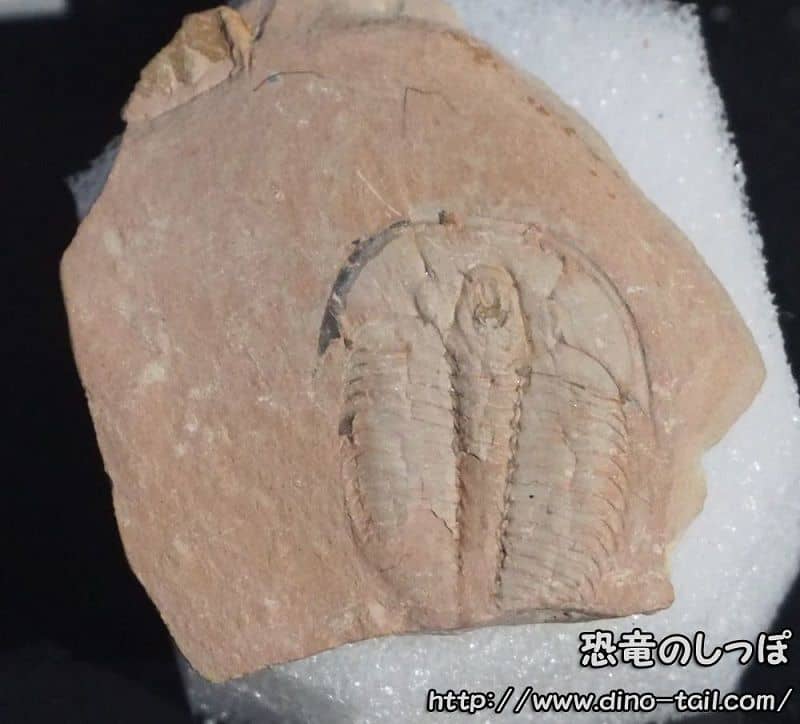
Collection of the Geological Museum of Japan
Elrathia is a representative genus of trilobites that were abundant in the seas of the Middle Cambrian.
Many fossils are found with the cheeks on both sides of the head missing, and flat specimens of about 1-2 cm in length are common.
The Elrathia kingii I first got when I was in elementary school was also just under 2 cm long and had its cheeks missing. Specimens of the same species exceeding 3.5 cm are considered quite large.
Why are the cheeks missing? Trilobite Molting
Trilobites are arthropods, like shrimp and crabs. To grow, they had to shed their old shells in a process called "molting." During molting, the shell would split along lines on the head called "facial sutures," and the cheeks (free cheeks) would detach first, allowing the body to emerge. That's why trilobite fossils are very often found as molted exoskeletons with the cheeks missing.
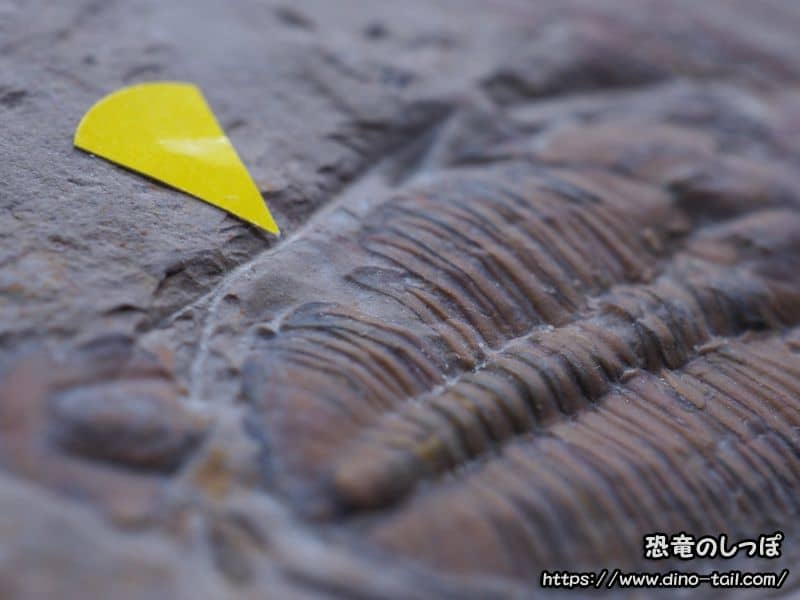
My Collection
Some segments are misshapen, indicating healed injuries.
Many Elrathia have also been found with "bite marks," which are injuries from predation. The most famous large predator of the Cambrian is Anomalocaris. Although there is no conclusive evidence that Anomalocaris was responsible, it is said that "Elrathia kingii with bite marks can fetch several to ten times the normal price" due to the popularity of Anomalocaris.
Specialists of Harsh Environments
Why are Elrathia kingii fossils found in such large numbers?
The answer lies in the special environment they lived in and their amazing ability to adapt to it.
It is known that the seabed in Utah where they lived was an "anoxic environment" with extremely low oxygen levels at the time. It was a living hell for most creatures, but Elrathia could withstand this harsh environment. They were able to flourish explosively in an environment with few predators and competitors.
The reason they are found in large groups is thought to be the result of a swarm being buried alive in an instant by a submarine landslide or similar event. Because of the anoxic environment, the carcasses were not eaten by other creatures or decomposed by bacteria, and were preserved as fossils in their beautiful state.
Initially, Conocoryphe
When this trilobite was first discovered in North America, it was described as Conocoryphe. This was in the 1800s.
In 1924, American paleontologist Charles Walcott re-described it as a separate genus, Elrathia.
Elrathia Stamp and Fossil Gallery
